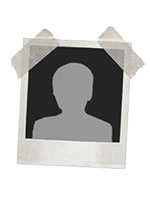A data-first brand architect with more than 25 years’ experience combining creativity with analytical rigor, Moore most recently served as Managing Director at Exemplar Holdings, where he drove consistent 19 percent year-over-year growth across the firm’s portfolio. He began his career in gaming, founding Last Unicorn Games and selling it to Wizards of the Coast, later becoming Wizards’ inaugural d20 Games Creative Director and VP of Product Development at Decipher.
Beyond gaming, he has held C-suite, ownership, and advisory roles for brands in entertainment, consumer goods, healthcare, and technology. Under Moore’s leadership, Paizo will lead analytics‑driven initiatives to enhance the player experience and deepen one-to-one engagement with the brands.
“Christian blends lifelong tabletop DNA with deep insights for growing brands like ours,” said Jim Butler, CEO of Paizo Inc. “His ability to unite creative vision with analytical discipline will help us reach new players and unlock fresh opportunities for Pathfinder®, Starfinder®, and worlds yet to come.”
As CGO, Moore will also spearhead Paizo’s core growth engines—encompassing digital marketing, hobby and book trade sales, consumer insights, licensing, ecommerce, and strategic partnerships—driving the company’s push into new platforms, regions, and opportunities.
“Paizo’s commitment to community and creativity resonates deeply with me,” Moore remarked. “I’m excited to pair the team’s storytelling genius with insight-led growth strategies and analytics as we continue to delight current fans while welcoming the next generation of adventurers.”
Moore holds an M.B.A. from Olin Business School at Washington University in St. Louis, an M.S. in Integrated Marketing Communications from Northwestern University, and a B.A. in literature from Princeton University.
Together, Moore and Paizo seek to blend analytics and artistry to broaden reach, deepen community bonds, and enrich player experiences on every platform.

